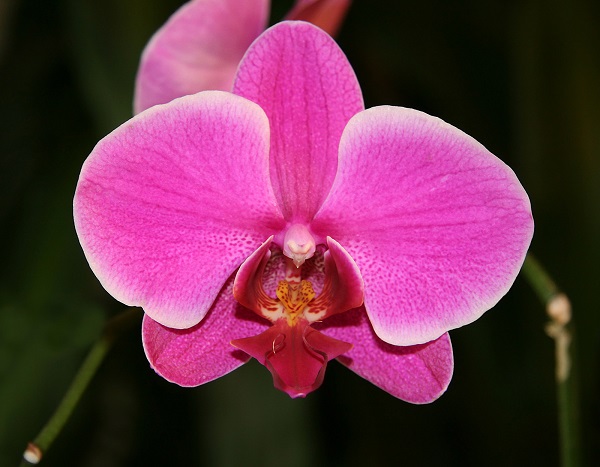
Phalaenopsis earned the nickname of moth orchids because the flowers of some species resemble flying moths. Moth orchids are the most common orchids found in gardens and homes as their flower blooms can last from weeks to months. Flowers come in a wide range of colors including yellows, pinks, white, and lavender. Their popularity is also due to their tolerance of temperature and light conditions in the average home.
Moth orchids prefer temperatures between 55 degrees F to 85 degrees F. The day and night temperature difference is important for flowering and Moth orchids flower best at daytime temperatures of about 75 degrees F and night time temperatures of about 60 degrees F. The optimum positioning for a Moth orchid is near an east or west facing window where the plant will get the morning and evening sun but won’t be burned in direct midday sunlight. If you are growing these orchids in a greenhouse, you’ll need to protect them with shade cloth. If too little light is an issue where you live, consider using fluorescent lights with the timer set to 10 hours lighting per day. Orchids need good air circulation and a low-speed oscillating fan, or ceiling fan, will be adequate.
Moth orchids will not survive heavy watering. They should receive a good drench and then only be watered again when the potting mix is nearly dry. If they are over-watered and too moist, they can develop root rot. They prefer humidity levels of between 50% and 75%. The best way to provide humidity to your orchid plant is by placing the pot on a shallow tray filled with water that also contains pebbles. The water level must not cover the bottom of the pot or else capillary action will be sucked up into the potting mix and this will be too damp for your plants.
Fertilize your plant with N:P:K fertilizer (liquid or slow-release), but when your Moth orchid is about to flower, use a fertilizer that has a higher phosphorus concentration. Once the orchid is in bloom, stop fertilizing altogether. Constantly check your plants for pests and remove them with a soft cloth that has been dipped in soapy water. Common pests may be slugs, mites, mealybugs and aphids.
Related Articles & Free Email Newsletter
Identifying and Treating 3 Common Orchid Problems




Comment here